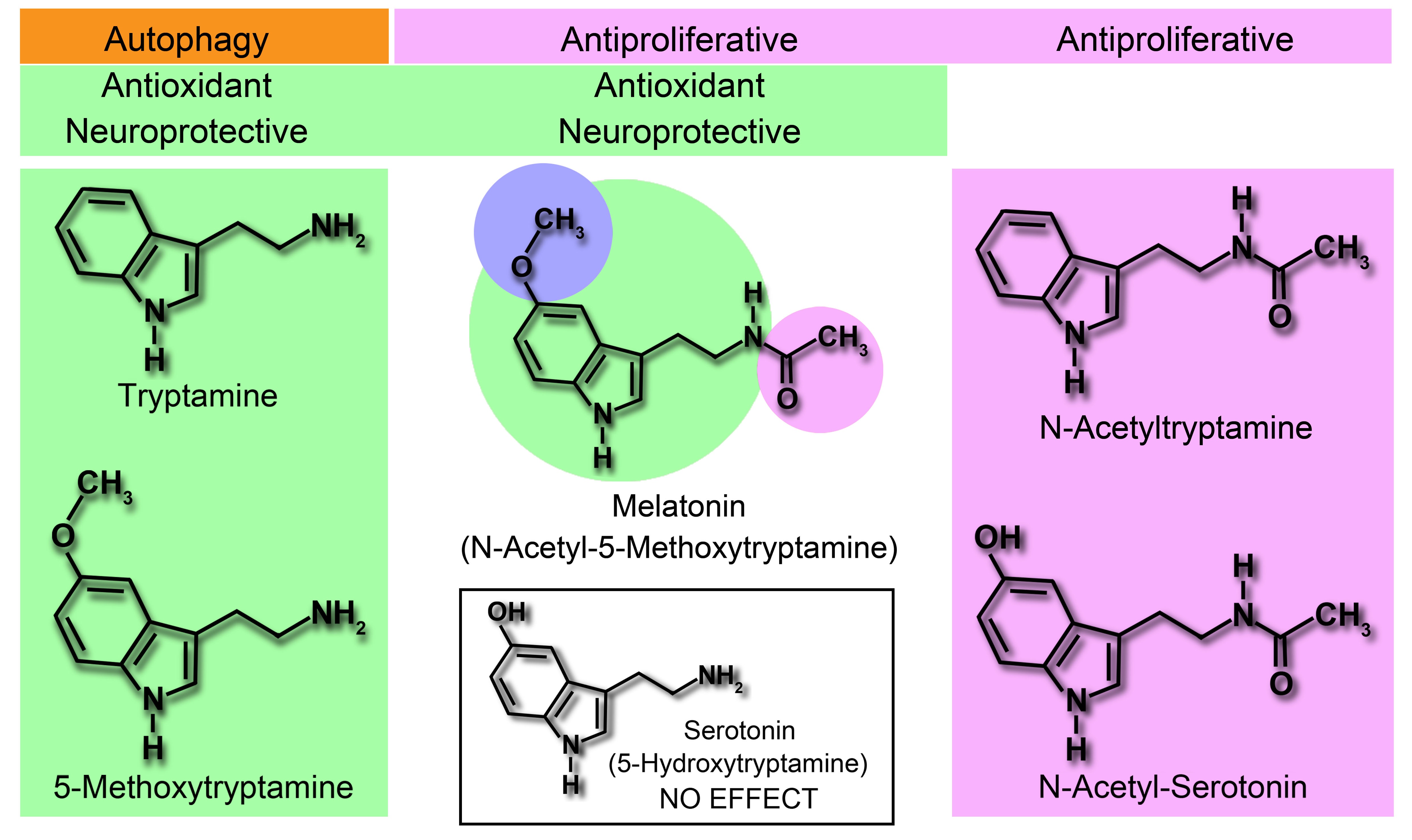Biological molecules choose wisely
25.07.2016
Melatonin is a molecule produced by animals, plants, fungi, and bacteria. Its biological functions vary in each organism, but in animals it seems to act as a hormone that synchronizes the rhythm of biological functions within the day-night cycles - including sleep timing, blood pressure regulation, seasonal reproduction, and many others.
Besides its function as synchronizer of the biological clock, melatonin is also being studied for its antioxidant, antiproliferative, oncolytic and neuroprotective properties.
A recent ITQB NOVA study suggests that the different pharmacological roles of melatonin are promoted through different mechanisms. When antiproliferation is augmented, neuroprotection decreases- and viceversa, when neuroprotection is enhanced antiproliferation decreases.
The research was done by studying the neuroprotective and antiproliferative activity of melatonin and related indoles in cell models and planarians. It was found that the N-acetyl side chain plays a key role in the antiproliferative effect, but it does so at the expense of antioxidant and neuroprotective properties. Removal of the N-acetyl group enhances the antioxidant and neuroprotective properties of the indole, but it can lead to toxic methamphetamine-like effects in several cell lines.

These results of the Cell Structure and Dynamics lab and international collaborators strongly suggest that neuroprotective and antiproliferative effects of melatonin rely on different parts of the molecule and are likely mediated by different mechanisms. They also predict that melatonin metabolism by target cells could determine whether melatonin inhibits cell proliferation, prevents toxicity or induces cell death. These observations could have important implications for the rational use of melatonin in personalized medicine.
Original article
Mol Cell Endocrinol. 2016 Jul 9;434:238-249
Ricardo Letra-Vilela, Ana María Sánchez-Sánchez, Ana Maia Rocha, Vanesa Martin, Joana Branco-Santos, Noelia Puente-Moncada, Mariana Santa-Marta, Tiago Fleming Outeiro, Isaac Antolín, Carmen Rodriguez and Federico Herrera







